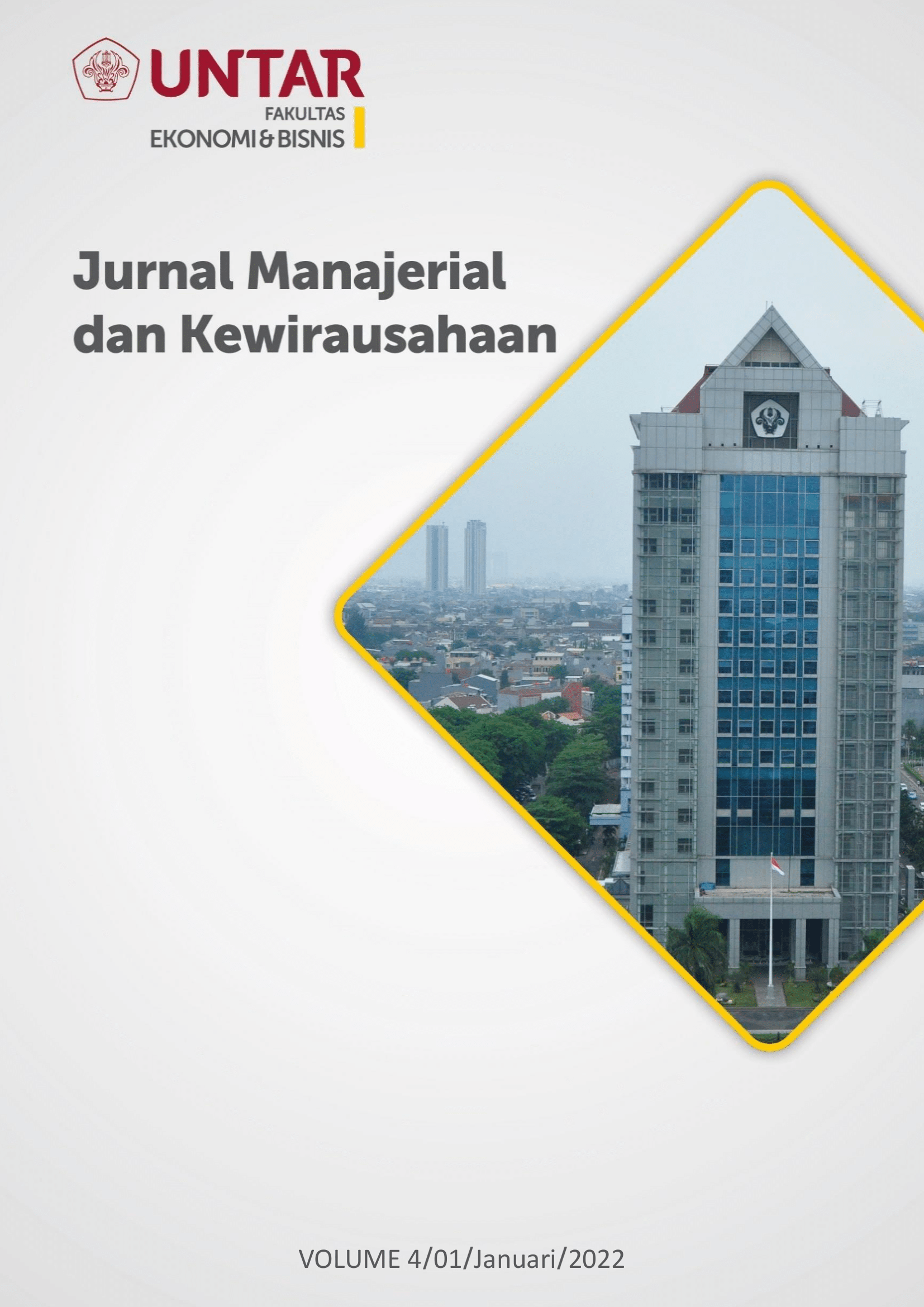Pengaruh Financial Attitude, Financial Behavior, dan Financial Knowledge terhadap Financial Literacy Pengguna OVO di Jakarta Barat
Isi Artikel Utama
Abstrak
Penelitian ini meneliti pengaruh dari sikap keuangan, perilaku keuangan dan pengetahuan keuangan terhadap literasi keuangan pengguna OVO di Jakarta Barat. Penelitian ini menggunakan responden sebanyak 235 responden pengguna OVO berdomisili di Jakarta Barat dan pengumpulan data menggunakan kuesioner. Desain penelitian ini menggunakan metode kuantitatif dengan pendekatan deskriptif dan teknik pengambilan sampel penelitian ini dengan teknik non probability sampling. Analisa data penelitian ini menggunakan Structural Equation Modelling (SEM) dengan software SmartPLS Versi 3.3.2 sebagai alat analisa data. Hasil yang di dapat dari penelitian ini adalah sikap keuangan berpengaruh signifikan terhadap literasi keuangan pengguna OVO, perilaku keuangan berpengaruh signifikan terhadap literasi keuangan pengguna OVO, pengetahuan keuangan berpengaruh signifikan terhadap literasi keuangan pengguna OVO di Jakarta Barat.
This study examines the effect of financial attitude, financial behavior, and financial knowlegde on financial literacy towards OVO users in West Jakarta. This study used 235 respondents of OVO users located in West Jakarta and collect data using a questionnaire. The design of this study uses a quantitative method with a descriptive approach and the sampling technique of this study is a non-probability sampling method. Analysis of the data of this study uses Structural Equation Modeling (SEM) with SmartPLS software Version 3.3.2 as a data analysis tool. The results obtained from this study are that financial attitude has a significant effect on the financial literacy of OVO users, financial behavior has a significant effect on the financial literacy of OVO users, and financial knowledge has a significant effect on the financial literacy of OVO users in West Jakarta.
Rincian Artikel
This work is licensed under a Jurnal Muara Ilmu Ekonomi dan Bisnis Creative Commons Attribution-ShareAlike 4.0 International License.,/p>
Referensi
Ajzen, I. (1991). The Theory of Planned Behavior. In Handbook of Theories of Social Psychology. Volume 1 (Vol. 211, pp. 438–459). SAGE Publications Ltd.
Atkinson, A., & Messy, F. (2012). Measuring Financial Literacy: Results Of The OECD/ International Network On Financial Education (Infe) Pilot Study. Paris: Organisation For Economic Cooperation And Development.
Bhushan, P & Medury, Y. (2014). An Empirical Analysis of Inter Linkages Between Financial Attitudes, Financial Behaviour and Financial Knowledge of Salaried Individuals. Indian Journal of Commerce and Management Studies, Nasik Vol. 5, Iss. 3, 58-64.
Chen, H. & Volpe, R.P. (2002), “Gender differences in personal financial literacy among college students”, Financial Services Review, Vol. 11 No. 3, pp. 289- 307.
Garg, N., & Singh, S. (2018). Financial Literacy Among Youth. International 100 Journal of Social Economics, 45(1), 173–186.
Kalekye, P. & Memba, F. (2015). The role of financial literacy on the profitability of women owned enterprises in Kitui Town, Kitui Country, Kenya. International Journal of Science & Research.
Kholilah, N. Al, & Iramani, R. (2013). Studi Financial Management Behavior Pada Masyarakat Surabaya. Journal of Business and Banking, 3(1), 69.
Lusardi, A., Mitchell, O., & Curto, V. (2010). Financial Literacy Among The Young. The Journal of Consumer Affairs, Madison Vol. 44,Iss. 2, 358
Rai, dkk. (2019). Association of Financial Attitude, Financial Behaviour and Financial Knowledge Towards Financial Literacy: A Structural Equation Modeling Approach.” FIIB Business Review 8(1):51–60.
Scheresberg, C. de B. (2013). Financial literacy and financial behavior among young adults: Evidence and Implications. Numeracy, 6(2).
Perry, V. & Morris, D. (2015). “The Role of Self-Perception, Knowledge, and Income in Explaining Consumer Financial Behavior.” The Journal of Consumer Affairs, Vol. 39, No. 2.



